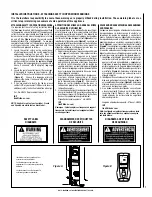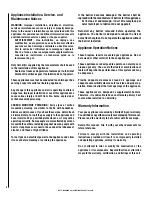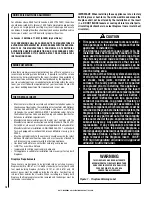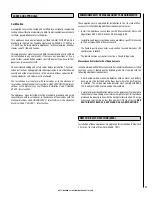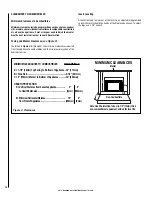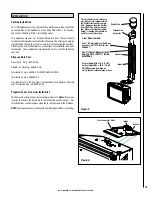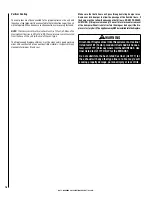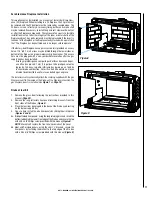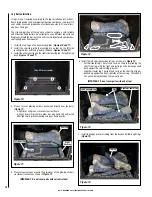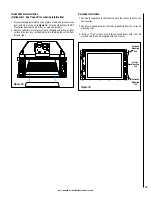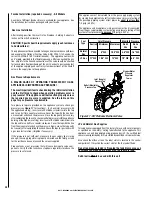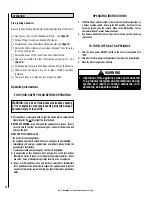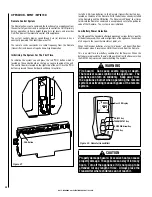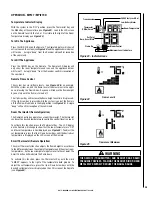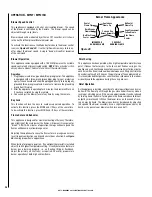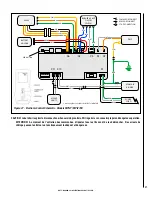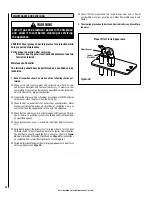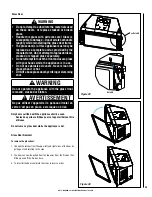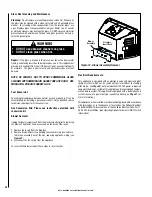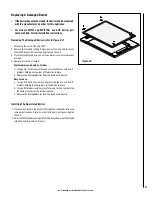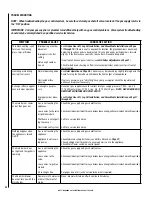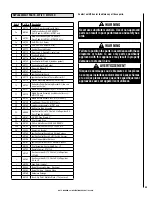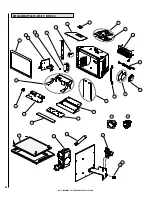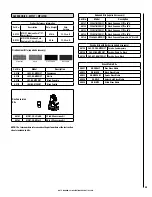
20
NOTE: DIAGRAMS & ILLUSTRATIONS ARE NOT TO SCALE.
Facade Installation (required accessory) - All Models
A number of different facade styles are available for your appliance. See
the installation instructions packaged with your facade.
Gas Line Installation
After leveling, position the insert in the fireplace - holding it about six
inches out from its final location.
CAUTION: Specific hearth requirements apply (see Clearances
to Combustibles).
This appliance must be connected to the gas line in accordance with local
codes and/or the National Fuel Gas Code, ANSI Z223.1 (In Canada, the
current CAN/CGA B149.1 installation code). This appliance comes with
an 5" nipple, provided in the literature package. After connecting the gas
line, all joints in the line and connections at the valve should be checked
for leaks before final positioning of the unit. Conduct a gas leakage test
of the appliance piping and control system downstream of the shutoff
valve in the supply line to the appliance.
Gas Pressure Requirements
A MAJOR CAUSE OF OPERATING PROBLEMS WITH GAS
APPLIANCES IS IMPROPER GAS PRESSURE!
The most important item to check during the initial installation
and the first thing to check when operating problems occur is
gas pressure! This appliance will not function properly unless
the required gas pressure is supplied. See the table on this
page for gas pressure requirements.
Two pressure taps are provided on the appliance's valve to check gas
pressures(see
Figure 17
for locations). To check inlet pressure (with
the appliance burning), insert a small flat blade screwdriver into the tap
and turn a half turn counter-clockwise. Cover the tap with the line from
a manometer and check the pressure. Close the tap gently but securely
after completing the check. To check manifold pressure (with the appliance
burning at the high burn setting) insert a small flat blade screwdriver into
the tap and turn a half turn counter-clockwise. Cover the tap with the line
from the manometer and check the pressure. Again, close the tap gently
but securely after completing the check. Check the taps for gas leaks with
a gas leak test solution (retighten if necessary).
If the pressure is not sufficient, make sure the gas supply line is large
enough, the supply regulator is properly adjusted and the total gas load
for the residence does not exceed the amount supplied.
Propane tanks are at pressures that will cause damage to valve com-
ponents. Verify that the tanks have step down regulators to reduce the
pressure to safe levels.
LP and Natural Gas Supplies
This appliance is equipped from the factory for use with natural gas only
as specified on the Safety / Listing label attached to the appliance. This
appliance can only be operated using propane gas (LP) if a certified fuel
conversion kit provided by IHP is installed by a qualified service technician.
Also check the orifice size on the label which is located in the control
compartment. It must be the correct size for the fuel and altitude.
Do not run propane tank dry. Running the tank dry may cause a
hazardous condition due to pressure drop in empty tank.
Solid fuel is NOT to be used with this unit.
Fuel
Type
Inlet Pressure
Manifold Pressure
Desired Minimum Maximum
On Hi
Fire
On Lo
Fire
Natural
Gas
7" WC
5" WC
10.5" WC 3.5" WC 1.6" WC
LP Gas
11" WC
10.5" WC
13" WC
10" WC 6.4” WC
Inlet (Supply)
Pressure Tap
Figure 17 - SIT Proflame Electronic Valve
Outlet (Manifold)
Pressure Tap
Stepper Motor
Pressure
Regulator
Tower
The appliance must be isolated from the gas supply piping system
by closing its equipment shutoff valve during any pressure testing of
the gas supply piping system at test pressures
equal to or less than
1/2 psig (3.5 kPa).
The appliance and its appliance main gas valve must be disconnected
from the gas supply piping system during any pressure testing of that
system at test pressures
in excess of
1/2 psig (3.5 kPa).


